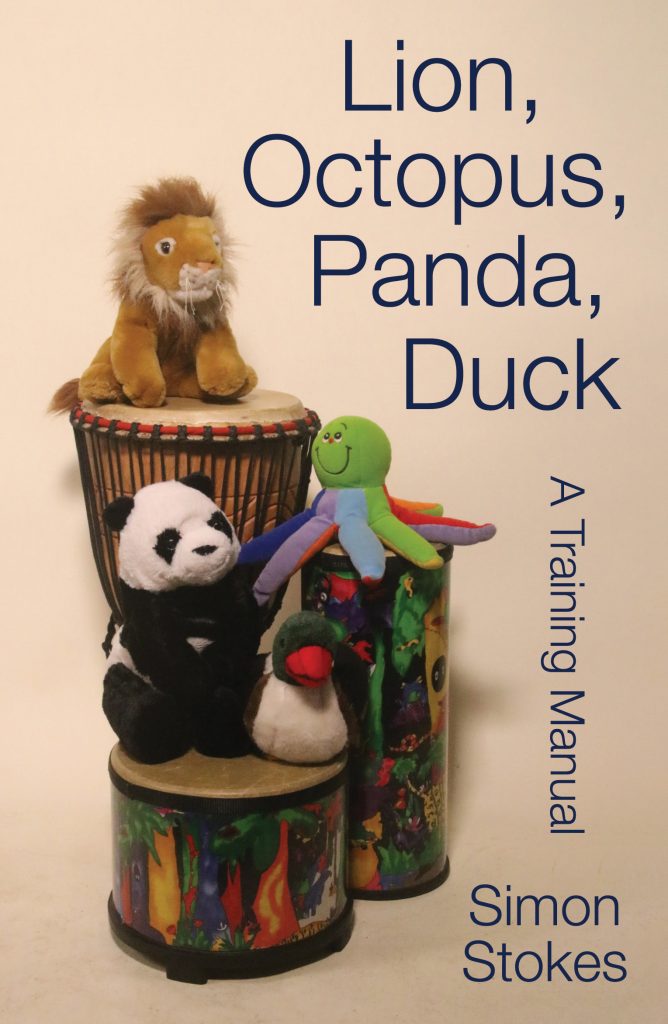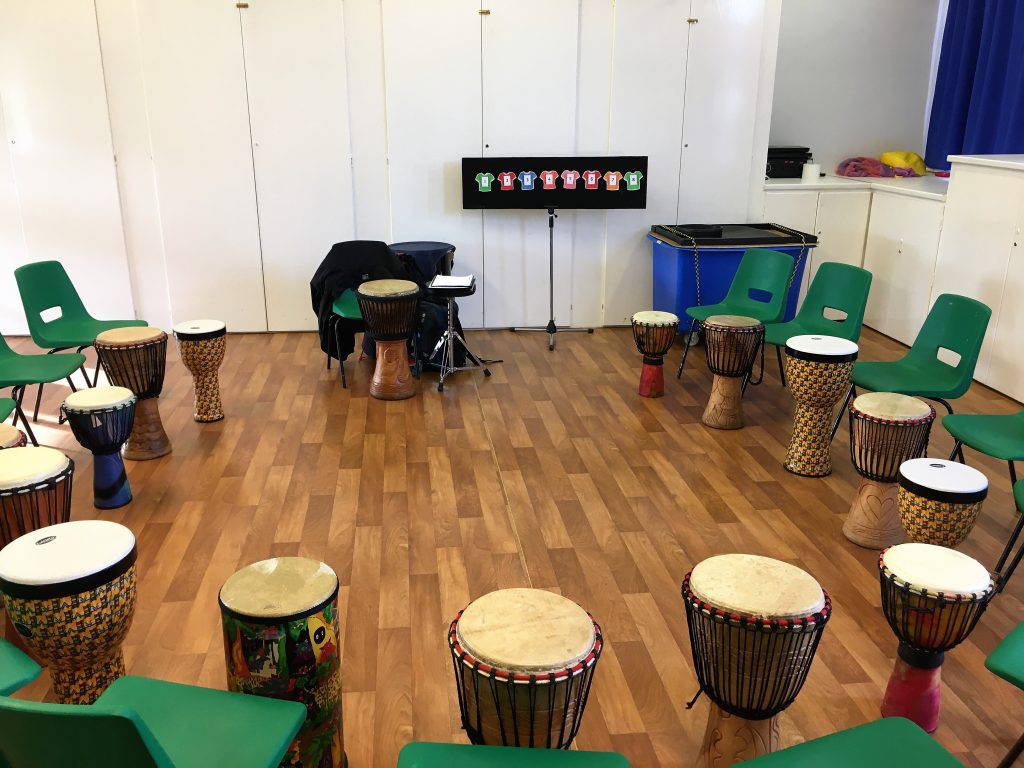Publication: Lion, Octopus, Panda, Duck
A Training Manual:
Using rhythm to enhance social communication and group interaction for players with additional needs.

For over three decades, Simon has been working with children and young people in education and drum circle settings. This has enabled him to fine tune his creative, technical and interpersonal skills in search of meaningful developmental outcomes for his players.
In Lion, Octopus, Panda, Duck, he offers his unique insight into setting up and running social communication groups for players with additional needs or alternative learning styles, using rhythm activities. In addition, his writing is infused with anecdotal stories and paradigms that capture the imagination and will connect with all who work in the field of rhythm and communication.


Find Your way around.
Chapter 1 – Origins and Some Basic Principles
Chapter 1 asks the question ‘Why drum?’ and looks at some of the benefits of drumming, enhanced with anecdotal evidence. It explains the origins of the book and offers this chapter guide to finding your way around.
Chapter 2 – Getting Started
Before the Drumming Begins
This chapter covers some of the basics of setting up, equipment choices and environmental factors that need to be considered before the drumming starts.
Chapter 3 – Read the Signs
Here, we deal with establishing and managing some of the key skills designed to bring into focus some of the elements, emotional and psychological, of group dynamics that work together to maintain a responsive, needs-based setting.
Chapter 4 – Programme Development
This chapter focuses on the basics of developing a structured and progressive but flexible programme. In it, we examine the elements that can be mixed and matched to meet the working environment and needs of the group.
Appendix: – Activity Cards
Concluding with a practical resource, here you will find a series of practical activity cards designed to support a basic programme. Also contained here is an overview of the format of the activity cards with links to programme elements and development strands.
Peer Review
The vibration of a drum permeates the bodies, hearts and minds of the people nearby. Its sonic resonance massages and helps release the emotional, physical and mental tensions we carry in our life. Playing a drum goes beyond ‘just making joyful noise’. It connects deeply within a person on a physical, emotional or spiritual level. When a caregiver facilitator introduces an interactive rhythm-based activity to a population of participants with additional needs and alternative learning styles, profoundly positive changes appear in their physiological and psychological states of being.
This book is not just a “How To” manual. Simon shares with us his extensive depth of experience working with groups with additional needs, and the profound positive interventions that lie behind the simple but powerful rhythm games he presents. In this book he provides a solid and workable framework on which to develop and deliver an effective program to the young people that you serve. Accessibility, simplicity and fun is the key to this manual. Simon carefully lays out protocols, paradigms, fundamental guidelines and usable activities in an easy to follow and understandable sequence. His activity cards are easy to follow and understand, highly malleable, and can be mixed and matched to meet many types of classroom needs. With Simon’s guidance through this easy to follow manual, you don’t have to be a musician or a drummer to successfully facilitate these rhythm games.
All you have to do is care. “Share your Spirit” in all the good works that you do. Through his book, Simon helps you do just that with rhythm-based activities.
Arthur E. Hull,
Head Elf of Village Music Circles.